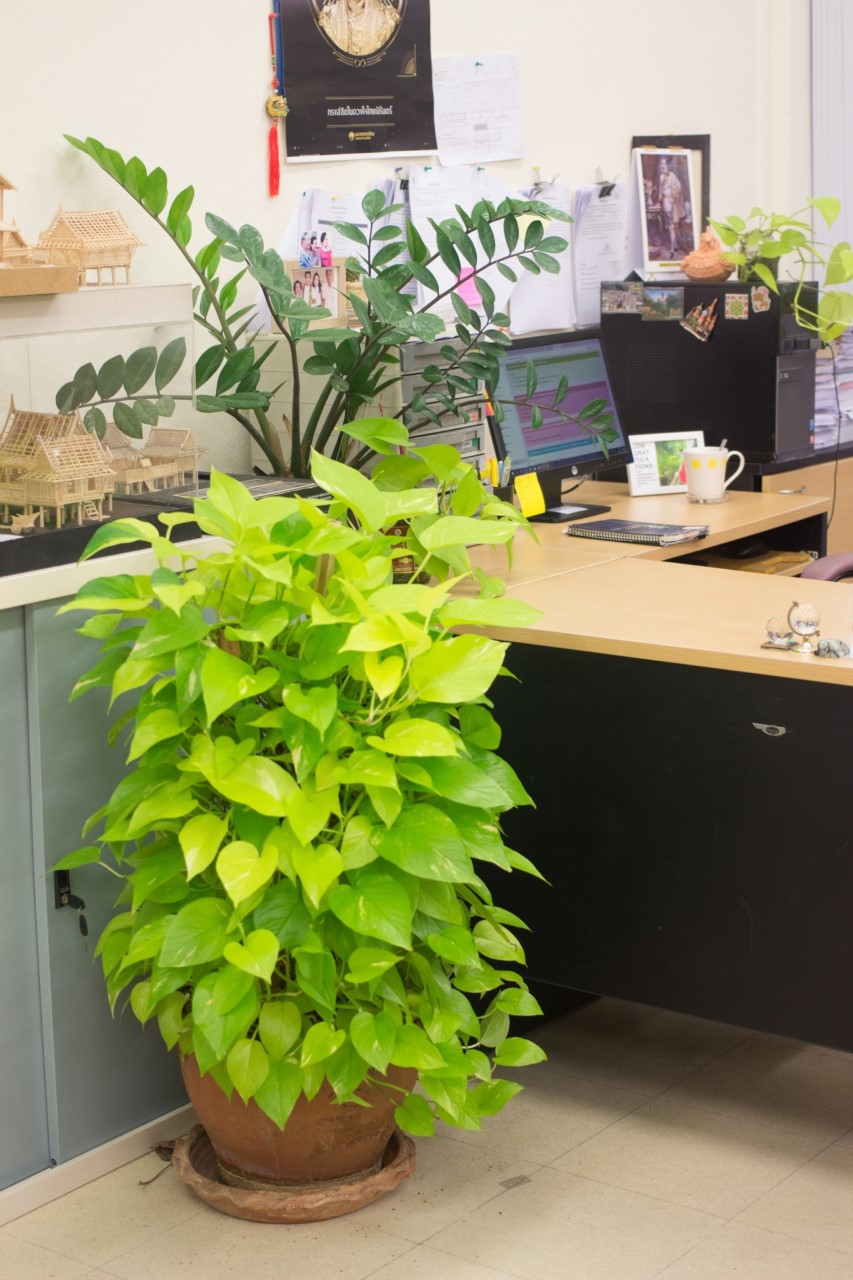การสำรวจไม้ประดับมาใช้ในอาคารสำนักงาน
Main Article Content
บทคัดย่อ
การปลูกพืชในอาคารส่งเสริมสภาพแวดล้อมที่ดีภายในอาคารช่วยลดอาการเจ็บป่วยจากการทำงานอาคารในพื้นที่เดิมเป็นประจำ วัตถุประสงค์ของงานวิจัยนี้เพื่อศึกษาพฤติกรรมและทัศนคติของการนำต้นไม้มาประดับในอาคารสำนักงาน ทำการศึกษาจากผู้ใช้สอยอาคารสำนักงานของหน่วยงานรัฐและหน่วยงานภาคเอกชน ซึ่งเก็บข้อมูลด้วยการสัมภาษณ์แบบเจาะลึก และแบบสอบถามจากกลุ่มตัวอย่าง 100 คน จาก 5 อาคารสำนักงาน ผลการวิเคราะห์พฤติกรรมและทัศนคติ พบว่า บริเวณพื้นทางเดินมีการนำต้นไม้มาประดับในอาคารมากที่สุดถึงร้อยละ 54 รองลงมาคือโต๊ะทำงานร้อยละ 33 ต้นไม้ที่นิยมนำมาวางประดับในสำนักงานมากที่สุดคือต้นพลูด่างร้อยละ 42 รองลงมาคือ กระบองเพชรร้อยละ 19
Article Details
เอกสารอ้างอิง
Brilli, F., et al. (2018). Plants for sustainable improvement of indoor air quality. Trends in Plant Science, 23 (6), 507–512.
Cruz, M.D., et al. (2019). Removal of volatile gasoline compounds by indoor potted plants studied by pixel-based fingerprinting analysis. Chemosphere, 221, 226-234.
Hutapatt, K. (2000). Mai pradap dut san phit. (In Thai) [Ornamental plants absorb toxic substances]. Bangkok. Natural Agricultural Journal Editorial Team.
Irga, P.J., Torpy, F.R. & Burchett, M.D. (2013). Can hydroculture be used to enhance the performance of indoor plants for the removal of air pollutants?. Atmospheric Environment, 77, 267-271.
Korpela, K., et al. (2017). Nature at home and at work: naturally good? Links between window views, indoor plants, outdoor activities and employee well-being over one year. Landscape and Urban Planning, 160, 38–47.
Raanaas, R. K., et al. (2011). Benefits of indoor plants on attention capacity in an office setting. Journal of Environmental Psychology, 31 (1), 99-105.
Rattanapun, T., Ongwandee, M. & Panyametheekul, S. (2017). Karn pramoen kwam samart khong tonmai pradap nai karn dak chap anuphak khanat lek nai arkhan. (In Thai) [Assessment of the ability of houseplants to trap indoor particulate matter]. Engineering Journal Chiang Mai University, 3 (24), 69-80.
Sawada, A. & Oyabu, T. (2008). Purification characteristics of pothos for airborne chemicals in growing conditions and its evaluation. Atmospheric Environment, 42 (3), 594-602.
Sivadechathep, J. (2013). Khunnaphab akat phainai arkhan. (In Thai) [Indoor air quality]. Nonthaburi: Sukhothai Thammathirat Open University.
Teiri, H., Pourzamani, H. & Hajizadeh, Y. (2018). Phytoremediation of VOCs from indoor air by ornamental potted plants: a pilot study using a palm species under the controlled environment. Chemosphere, 197, 375–381.


